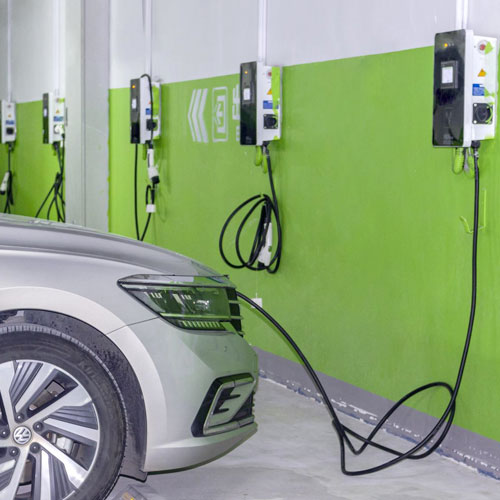-
 +86 18924678741
+86 18924678741 -
 sales@hjlcharger.com
sales@hjlcharger.com -
 Shenzhen City, Guangdong Province, China
Shenzhen City, Guangdong Province, China
The 22kw charging station is suitable for indoor and outdoor environments and can meet home and commercial needs. It has an intuitive color LCD display to display charging status, such as charging time, voltage, power consumption, etc., and a 5-meter integrated charging cable to simplify your daily use and give you full control over charging.
The product technical parameters of the 22kw charging station are as follows:
Parameters | Requirements |
General Requirements | |
EV Charger Type | AC |
Charger Capacity | 22KW |
Equipment size | L324*W161*H1430(mm) / L359*140*H510(mm) |
Product Model NO. | ENC-ACB/L022A |
Mounting | Wall-Mounted/Column Type |
Input Requirements | |
AC Supply System | Single-Phase, 3 Wire AC system(ANSI) |
Three-Phase, 5 Wire AC system(ENC) | |
Nominal Input Voltage | AC380V±15% |
Input Frequency | 50±3Hz |
Environmental Requirements | |
Ambient Temperature Range | -25 to 55°C |
Ambient Humidity | 5 to 95% |
Storage Temperature | -40 to 70°C |
Mechanical Requirements | |
IP Ratings | IP 55 |
Cooling | Natural Cooling |
Output Requirements | |
Number of Outputs | 1 |
Type of Each Output | AC380V±15% |
Single Output Max.Current | 32 Amp |
User Interface & Display Requirements | |
Display & Touch-Screen Size | 4.3 Inches Screen |
User Authentication | QR Code/RFID Card /Password Login |
Metering Information | Consumption Units |
Communication Requirements | |
Communication between EVSE and Central server | Protocol (Optional) |
Interface between Charger and CMS | Ethernet/3G/4G/WIFI (Optional) |
Protection & Safety Requirements | |
Executive Standard | IEC 62196 2017, IEC 61851 2017, SAE J1772, etc. |
Safety Parameters | Over Current, Over Voltage, Under Voltage, Residual Current, Surge Protection, Leakage Protection, Short Circuit, Over Temperature, etc. |














